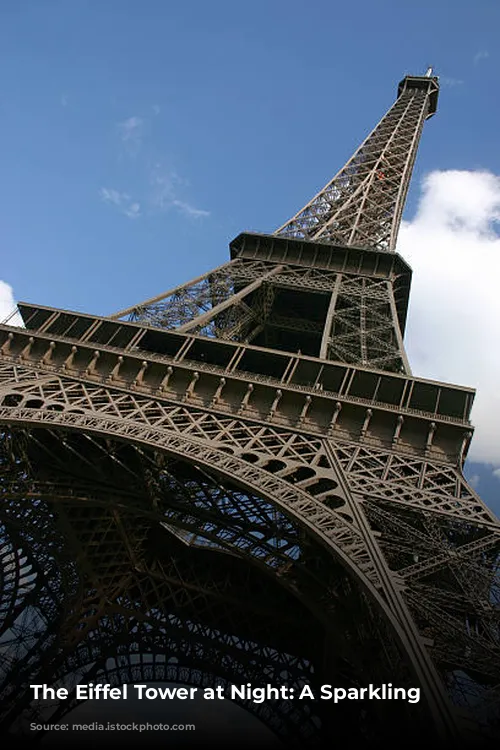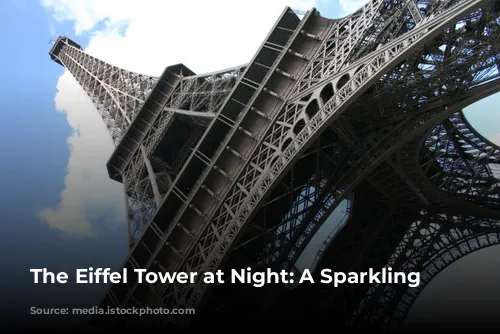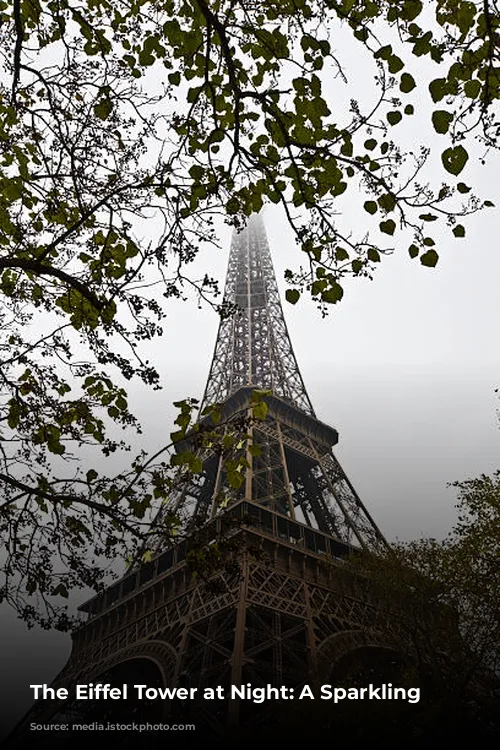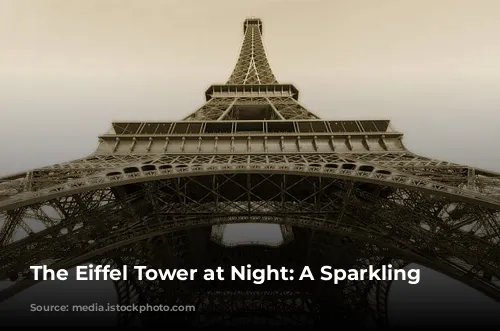Imagine this: You’re strolling through the heart of Paris, the air alive with the soft hum of the city. As night descends, the Eiffel Tower begins to glow in a soft golden light. It’s a sight that captures the imagination, a timeless symbol of beauty and wonder. But when exactly does this magic unfold?

A Symphony of Light
The Eiffel Tower’s nighttime display is a meticulously orchestrated spectacle, a harmonious blend of golden lighting, sparkling brilliance, and a powerful beacon. This captivating display begins as soon as the sun dips below the horizon, signaling the start of twilight.
The Tower’s golden illumination, a symphony of 336 spotlights, is activated by light sensors, ensuring a seamless transition from day to night. This gentle glow bathes the Tower in a warm, inviting light, highlighting its intricate structure.
At the same time, the beacon, positioned atop the Tower, begins to rotate, sending its powerful beams across the Parisian sky. This symbolic light, with a range of 50 miles, serves as a beacon of hope and guidance, echoing the original purpose of the Tower as a beacon for the city.
And then, the sparkles begin. These thousands of tiny lights, strategically placed on the Tower’s four sides, flicker to life in a captivating dance. For five minutes at the beginning of each hour, these twinkling stars transform the Tower into a breathtaking spectacle, drawing gasps of awe from onlookers.

Timing the Show
So, how can you ensure you don’t miss this mesmerizing display? The Eiffel Tower’s lighting schedule is closely tied to the setting sun. The precise time of the lighting will vary depending on the time of year, but you can typically expect the lights to come on within 10 minutes after sunset.
For example, if the sun sets at 8:35 pm, the lights will switch on around 8:45 pm, and the first sparkles will commence at 9:00 pm.

Catch the Final Curtain Call
As the night draws to a close, the Eiffel Tower’s lights are switched off at 11:45 pm, except during the summer months and French holidays, when the lights remain on until 1:00 am.
But don’t think the show is over just yet! Even after the golden glow and beacon are extinguished, the sparkles continue to twinkle for a few minutes, offering one last glimpse of magic before the Tower falls silent for the night.

The Best Views
The Eiffel Tower is undoubtedly the best place to witness this dazzling display. Standing on the Tower’s second floor, you’ll be treated to a breathtaking view of the city bathed in the Tower’s golden glow, with the sparkling spire directly above you. The magic of the moment is truly unforgettable.
If you’re not visiting the Tower itself, fear not! There are numerous fantastic vantage points across Paris, with the Trocadéro esplanade and the Champ de Mars being particularly popular.
Beyond the Beauty
The Eiffel Tower’s lighting system is not just a beautiful spectacle, but a testament to engineering brilliance. Designed by lighting engineer Pierre Bideau, the system was inaugurated on December 31, 1985, replacing the previous external lighting system with a new, more efficient system.
The 336 spotlights, strategically positioned within the Tower’s structure, illuminate the monument from within, highlighting its intricate design and ensuring the safety of visitors.
A Legacy of Light
The Eiffel Tower’s lighting system has become an iconic symbol of the city, inspiring similar initiatives across the world. This remarkable display is a tribute to the vision and artistry of those who created it, showcasing the transformative power of light to illuminate, inspire, and captivate.
So, the next time you find yourself in Paris, be sure to set aside some time to witness the breathtaking spectacle of the Eiffel Tower at night. As the lights shimmer and the beacon spins, you’ll be transported into a world of wonder and enchantment, forever etched in your memory.
